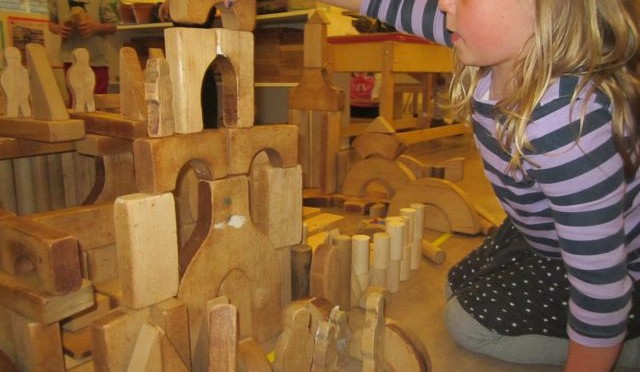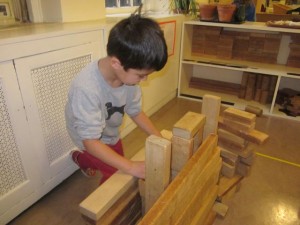Albert Einstein imagined himself chasing a beam of light and that helped him develop the theory of relativity. Nikola Tesla imagined his inventions in his mind’s eye and problem-solved some of the steps before he even began building. The two great inventors made singular use of their imaginations coupled with a talent for spatial thinking. I thought of that this week while watching kindergartners joyfully and imaginatively building with blocks. Block building is one of many opportunities kids have at LREI to exercise their imagination muscle and develop their spatial thinking skills.
Spatial thinking and imagination are skills that can be overlooked and undervalued in schools. (If the topic interests you read more about it at the education blogMindshift.) Both spatial thinking and imagination are inspired and supported by the process of creating and tinkering. When our youngest lower school students are building with blocks, they are creating and tinkering. They are balancing, arranging, re-arranging, knocking things over, re-building and problem-solving. They are ordering objects in space, creating story, and transforming those objects in their mind’s eye.
I asked the four kindergartners pictured about their block buildings. Henry and Teagan were building castles complete with areas for cars, people, and animals (of course). They had multiple entrances, roads, pathways and rooms all intricately interconnected. Judah and Maxwell were building a model of the Intrepid and an island where it docks complete with land and a docking area for the ship. Both pairs dreamed up their designs, balanced block upon block carefully to execute their design, made changes creatively along the way, and experienced a few collapses that had to be repaired. They had the space and time to work on their creations over several days because block building is taken seriously and highly valued in the early childhood program.
As they grow older, our students’ fine motor skills get better and more detailed and the chances to create and build keep reappearing in the curriculum. They continue to build with string, glue, cardboard, paper, wood and a healthy dose of imagination in art class, in woodshop, and even as part of social studies. Why should we continue to make time for tinkering and building? Like it was with Einstein and Tesla, it is highly likely that solutions to present and future problems will come from some of our current students’ imagination and spatial thinking.




